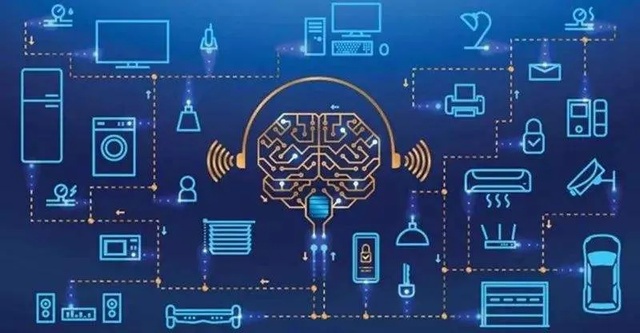Advancing Security and privacy: The benefits of embedded AI

This thing about security and privacy, specifically the advantages of embedded AI. Now that digitization is happening so fast, security and privacy are all of our special concerns. With the rise of the Internet of Things (IoT) and the increasing popularity of various smart devices, the collection and use of personal data has become increasingly frequent.
Therefore, when engaging in device design and implementation, the embedded artificial intelligence (AI) technology is incorporated, which brings new hope for improving security and protecting privacy. This embedded artificial intelligence has its unique architecture and functions, which allows the device to process the information locally, without relying on the cloud server, so that the risk of data leakage is greatly reduced, and the emergency response ability of the system is also strengthened.
Basic concepts of embedded artificial intelligence
Embedded artificial intelligence is the artificial intelligence algorithm crammed into the hardware of the device, so that the device can process data, analyze and make decisions on its own. Compared with the traditional cloud computing model, embedded AI can process data in real time locally, without sending the data to a remote server, and this localized processing can greatly improve the response speed and system autonomy.
Enhanced data security
The first is local data processing. One of the big benefits of this embedded AI is that it can process data locally on the device. With AI algorithms built into the device, the collection, analysis and storage of all sensitive data can be done on the device itself, so that the risk of data exposure during transmission is greatly reduced. Coupled with modern encryption technology, even if the data in the device is stolen by someone, without the corresponding decryption key, it is useless.
The second is real-time monitoring and response. This embedded AI technology can monitor security events in real time, and can also react to pre-set thresholds and rules. It's like a smart camera that can recognize suspicious activity in real time, call the police when it sees something unusual, and take defensive measures. This rapid response mechanism is much stronger than the traditional method of relying on cloud servers for data analysis, and can reduce many potential security threats.
Finally, it reduces the attack surface. Compared with traditional centralized intelligent systems, this embedded AI decentralized the center of data processing. The intelligence is embedded in many edge devices, and the attacker has to control many devices at the same time to get important data, which can greatly increase the difficulty of the attack, and the security of the entire system is improved.
About Privacy Protection
The first is personal data control. At a time when personal privacy is increasingly valued, this embedded AI gives users more control over their data. Users' personal data can be anonymized locally, so they don't have to worry about sending sensitive information to the outside world. In addition, users can decide when and how to share their data, and this person's privacy can be guaranteed.
The second is the intelligent privacy protection mechanism. Embedded AI can learn the user's behavior patterns on its own, and if it detects any improper use of data, it can quickly stop it. For example, in smart home systems, the device can automatically recognize the user's common scenarios, but also according to the needs of the user to adjust the data access rights, so that sensitive data can avoid accidental disclosure.
Finally, compliance and transparency. With the implementation of data protection regulations (such as GDPR) in various countries, companies will have to follow strict rules when handling data. This embedded AI design can make the data processing process more transparent, and companies can clearly show how the data is used and how the user's rights are set, which can meet the transparency requirements of the law.
How to improve system efficiency and reliability
The first is to reduce latency and bandwidth consumption. This embedded AI system processes data locally, so the bandwidth required for data transmission is greatly reduced, and the network burden is also reduced. And because there is less reliance on cloud services, system response times are faster and more real-time. This is especially important for security systems that require immediate feedback and decision-making.
The second is to improve system reliability. In the traditional cloud computing model, if the network is unstable or the connection is broken, the system often collapses. But this embedded artificial intelligence can run independently, even without a network, but also to ensure the safety and performance of the system. This alone makes embedded AI the technology of choice for critical infrastructure.
Finally, adapt to multiple application scenarios. This embedded AI technology is highly scalable and can be used in many different scenarios, such as smart homes, traffic management, and healthcare. In each different environment, the embedded AI can learn specific environmental data, accurately identify potential threats and take defensive measures, and the application field of the device will be expanded.
Future direction of development
Although embedded artificial intelligence performs well in terms of security and privacy protection, it has potential, and there are still many challenges in the early stages of development. How to further improve the processing performance, reduce power consumption and cost, and optimize the user experience are important issues to promote the wider application of this technology. At the same time, developers must constantly update and optimize algorithms to adapt to increasingly complex application scenarios and attack methods. As the technology continues to advance, this embedded artificial intelligence can certainly bring us a safer, more efficient and smarter life.
관심을 가질만한 제품
 |
CC109139408 | AC/DC CONVERTER 52V 2000W | 2178 More on Order |
 |
GP100H3R48TEZ-IN | AC/DC CONVERTER 48V 6000W | 4482 More on Order |
 |
AXH010A0Y93-SR | DC DC CONVERTER 1.8V 18W | 7272 More on Order |
 |
AXH010A0P5Z | DC DC CONVERTER 1.2V 12W | 5814 More on Order |
 |
SW001A2B91-SR | DC DC CONVERTER 12V 14W | 7902 More on Order |
 |
FNW700R64-18Z | DC DC CONVERTER 28V 700W | 7092 More on Order |
 |
EQD075A41Z | DC DC CONVERTER 3.3-5V 75W | 3508 More on Order |
 |
QRW025A0A1Z | DC DC CONVERTER 5V 125W | 8046 More on Order |
 |
QW020A0G1 | DC DC CONVERTER 2.5V 50W | 4896 More on Order |
 |
QRW025A0F41 | DC DC CONVERTER 3.3V 83W | 6642 More on Order |
 |
QRW025A0A1-H | DC DC CONVERTER 5V 125W | 2466 More on Order |
 |
QPW060A0G1 | DC DC CONVERTER 2.5V 150W | 5850 More on Order |
 |
JW150D1 | DC DC CONVERTER 2V 60W | 3960 More on Order |
 |
JFC100C1 | DC DC CONVERTER 15V 100W | 7866 More on Order |
 |
JC075F1 | DC DC CONVERTER 3.3V 50W | 3544 More on Order |
 |
JAHW100F1 | DC DC CONVERTER 3.3V 66W | 2808 More on Order |
 |
JRCW016A0R41-TZ | DC DC CONVERTER 28V 450W | 4212 More on Order |
 |
EBDW020A0B41-HZ | DC DC CONVERTER 12V 240W | 8100 More on Order |
 |
EBVW017A0S14R0641Z | DC DC CONVERTER 14V 238W | 4320 More on Order |
 |
APXW005A0X43-SRZ | DC DC CONVERTER 3-18V 45W | 5886 More on Order |
 |
KBVW006A0B41Z | DC DC CONVERTER 12V 72W | 18096 More on Order |
 |
SHHD001A3B41Z | DC DC CONVERTER 12V 15W | 15600 More on Order |
 |
APTS003A0X-SRZ | DC DC CONVERTER 0.6-5.5V 16W | 23316 More on Order |
 |
APXS003A0X-SRZ | DC DC CONVERTER 0.6-5.5V 16W | 16884 More on Order |









